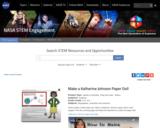
A printable paper doll of Katherine Johnson
- Subject:
- Physical Science
- Material Type:
- Activity/Lab
- Provider:
- NASA
- Provider Set:
- STEM Outreach
- Author:
- NASA
- National Aeronautics and Space Administration
- Date Added:
- 01/30/2023

A printable paper doll of Katherine Johnson
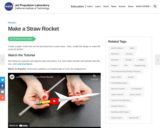
Learn how to build a paper rocket.
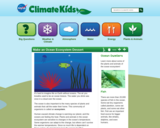
It’s hard to imagine life on Earth without oceans. The air you breathe used to be an ocean breeze. The water you drink was once in a cloud over the ocean.
The ocean is also important to the many species of plants and animals that call the water their home. This community of organisms is called an ecosystem.
Human-caused climate change is warming our planet, and the oceans are feeling the heat. Plants and animals in the ocean ecosystem are sensitive to changes in the ocean’s temperature. Some organisms can adapt to the change, but others can’t survive the warmer temperatures. Since so much life is dependent on these waters, it’s important to keep the oceans healthy!
Scientists are monitoring the temperature of the ocean with an instrument called the Moderate Resolution Imaging Spectroradiometer (MODIS) on NASA’s Aqua satellite. The satellite measures the temperature of the top millimeter of the ocean’s surface.
With this activity, learn to make a cool and tasty version of the ocean ecosystem at home!
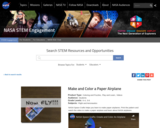
NASA Space Crafts helps you learn to make paper airplanes. Print the pattern and watch the video to make a paper airplane and learn about NASA airplanes.
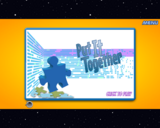
A jigsaw puzzle game that features space pictures and facts.

This resource describes the physics behind the formation of clouds, and provides a demonstration of those principles using a beaker, ice, a match, hot water, and a laser pointer. This resource is from PUMAS - Practical Uses of Math and Science - a collection of brief examples created by scientists and engineers showing how math and science topics taught in K-12 classes have real world applications.

In this short demo/activity, a balloon with baking soda in it is stretched over the mouth of a flask or bottle containing vinegar. The balloon is tipped so that the baking soda falls into the vinegar, and the reaction creates carbon dioxide, which inflates the balloon. The activity is part of the children's book, The Air We Breathe.

This is an activity about 3-D imagery. Learners can follow the instructions to create their own 3-D images using a digital camera, photo editing software, and red-blue 3-D glasses.

The purpose of the resource is to produce a land cover type map from hard copies of Landsat satellite images.

This is an activity about magnetism. Using bar magnets, classroom materials, and a compass, learners will explore how bar magnets interact with one another and with other materials, use a compass to find the direction north, and use various materials to make magnetic field lines visible around a bar magnet. This is an activity in a larger poster resource, entitled The Sun Like It's Never Been Seen Before: In 3D.

This is an activity about bar magnets and their invisible magnetic fields. Learners will experiment with magnets and a compass to detect and draw magnetic fields. This is Activity 1 of a larger resource, entitled Exploring the Sun. The NASA spacecraft missions represented by this material include SOHO, TRACE, STEREO, Hinode, and SDO.

This activity introduces Geographic Information Systems (GIS) and poses questions that help students answer questions that require spatial data. Students examine questions about communities and populations from local to state to national scales. Six GIS, math and mapping activities are identified in this resource. This resource is from PUMAS - Practical Uses of Math and Science - a collection of brief examples created by scientists and engineers showing how math and science topics taught in K-12 classes have real world applications.
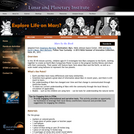
This is an activity about similarities and differences between the Earth and Mars. Learners will investigate how Mars compares to the Earth, working together to create an Earth-Mars Comparison Poster to post in the program facility/library and share with their community. Their poster will feature basic facts about Mars and the Earth, as well as a scale model using balloons to represent the two planets. It also includes specific tips for effectively engaging girls in STEM. This is activity 2 in Explore: Life on Mars? that was developed specifically for use in libraries.

This activity focuses on the relationship between science of looking for life and the tools, on vehicles such as the Mars Rover, that make it possible. Learners will create their own models of a Mars rover. They determine what tools would be necessary to help them better understand Mars (and something about life on Mars/its habitability). Then they work in teams to complete a design challenge where they incorporate these elements into their models, which must successfully complete a task. Teams may also work together to create a large-scale, lobby-sized version that may be put on display in the library to engage their community. The activity also includes specific tips for effectively engaging girls in STEM. This is activity 6 in Explore: Life on Mars? that was developed specifically for use in libraries.

This is a set of three activities about how scientists study other worlds. Learners will explore and compare the features of Mars and Earth, discuss what the features suggest about the history of Mars, and create a model to help them understand how scientists view other worlds. The activities help to show why scientists are interested in exploring Mars for evidence of past life, and address the question: "Why are we searching for life on Mars?" It also includes specific tips within each activity for effectively engaging girls in STEM. This is activity 4 in Explore: Life on Mars? that was developed specifically for use in libraries.
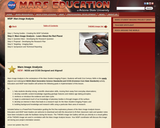
This is a lesson about using evidence to construct sequences of geologic events. Learners will interpret real NASA science data to identify features on the surface of Mars, determine the surface history of the area, calculate the size of features, and develope investigable questions. Students will study images taken by NASA's Mars Thermal Emission Imaging System (THEMIS) camera orbiting Mars. Students will use the THEMIS images to analyze the surface features and geological history of Mars. The lesson models scientific inquiry using the 5E instructional model and includes teacher notes and vocabulary.
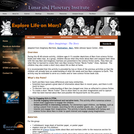
This activity focuses on how the search for life on Mars is portrayed in fiction and videos. Learners will consider depictions of Mars from science fiction books and video clips. As a group, children discuss what they know about Mars and compare their ideas with the way Mars and imaginary martians are presented in the science fiction works. They then use what they’ve learned to create their own Mars Science Fiction “Movie Trailer” Zines. It is recommended that this activity is preceded by two or three of the previous activities in the series so that the children will already have an understanding of what life needs and how Mars compares to Earth. This activity may be extended to serve as a tween and/or teen science fiction book club. It also includes specific tips for effectively engaging girls in STEM. This is activity 7 in Explore: Life on Mars? that was developed specifically for use in libraries.

This book contains 24 illustrated math problem sets based on a weekly series of space science problems. Each set of problems is contained on one page. The problems were created to be authentic glimpses of modern science and engineering issues, often involving actual research data. Learners will use mathematics to explore problems that include basic scales and proportions, fractions, scientific notation, algebra, and geometry.

This is a lesson about determining planetary composition. Learners will use a reflectometer to determine which minerals are present (from a set of knowns) in a sample of Mars soil simulant. Requires the use of ALTA II spectrometers (which may be borrowed from the Lunar and Planetary Institute or purchased online) and Mars soil simulant. The activity is part of Project Spectra, a science and engineering program for middle-high school students, focusing on how light is used to explore the Solar System.

This is an activity about image comparison. Learners will analyze and compare images taken by the Solar Dynamics Observatory. They will match four magnetic solar images, or magnetograms, to their corresponding extreme ultraviolet, or EUV, light images by studying solar features in the images. At the end, they will recognize that areas of high magnetic activity on the Sun correspond to extreme solar activity.